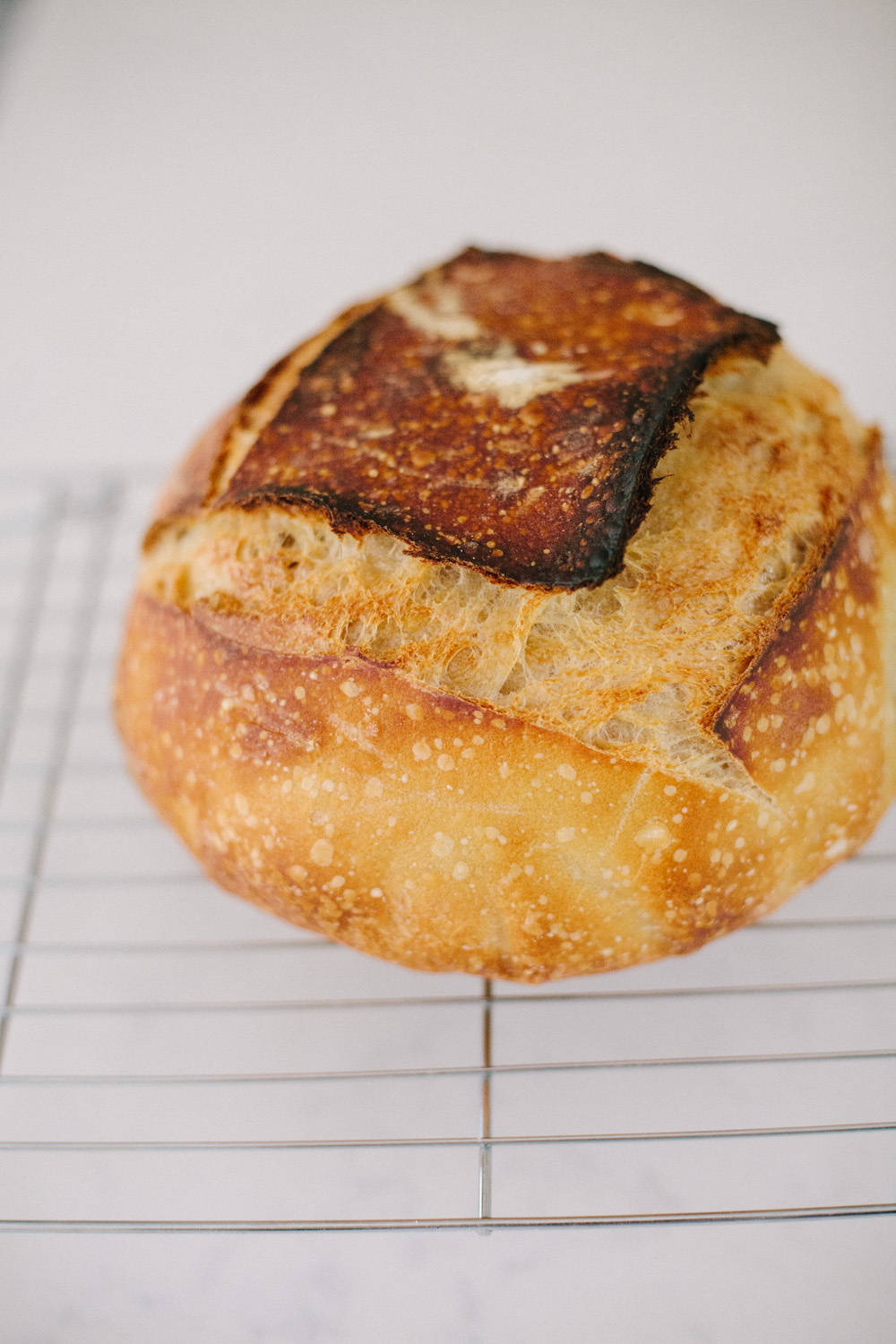Whether you like it for its signature tang or you’re drawn to its eye-catching crust designs, sourdough has even more to offer, at least from a health perspective. Why is sourdough good for you? Here’s a look.

Wade into the waters of gut health and traditional foods, and you’re going to hear about sourdough. Why is this? Why is sourdough good for you? And why, in a world of grocery-store convenience and long bread aisles, would people choose to purchase or bake the long-fermented, ancient bread that takes multiple steps and days of time?
While there has been at least one pilot study challenging the health benefits of sourdough, here’s the thing: there is also a wide body of evidence–anecdotal and empirical–showing reason to give real sourdough, the kind slow-formed and naturally leavened, a second look. Sourdough is the bread of history, the bread people baked when they couldn’t buy those cheap, tiny packets of commercial yeast at the store. Sourdough, also known as levain, isn’t always sour, but it does take time, at least when it’s authentic sourdough and not commercial bread enhanced with a sour taste. When it’s made with high-quality flour, i.e., organic flour free of pesticides, according to some studies, it’s the best bread you can eat.
So why’s it the best? If you’ve ever wondered this, here’s a look at a few key reasons why sourdough is good for you, both body and soul.
-
It’s easier to digest.
According to most sources, sourdough bread is an ally to anyone with digestive difficulties. Why? Traditional wheat contains what’s known as phytic acid, something that inhibits the enzymes that break down proteins and starch in digestion. In sourdough, however, “the wild yeast and lactobacillus in the leaven neutralise the phytic acid as the bread proves through the acidification of the dough. This prevents the effects of the phytic acid and makes the bread easier for us to digest,” says Vanessa Kimbell of The Sourdough School. For some people with gluten sensitivities, this makes sourdough a bread easier to handle.
-
It’s filled with nutrients.
While many breads are high in nutrients, sourdough bread is high in nutrients that are more available to the body. Here’s why: the lower levels of phytates in sourdough bread not only aid digestion, but also they improve mineral absorption. “Studies show that the lactic acid bacteria present in sourdough bread have the ability to release antioxidants during sourdough fermentation,” says an article at Healthline. “Sourdough fermentation also increases folate levels in the bread, although levels of certain nutrients like vitamin E may be slightly reduced in the process.”
-
It doesn’t spike insulin.
The same acids that neutralize phytic acid and make nutrients more available in sourdough bread also slow down the way glucose is released into the blood stream, according to a 2013 article in The Guardian. “The acids slow down the rate at which glucose is released into the blood-stream and lower the bread’s glycaemic index (GI), so it doesn’t cause undesirable spikes in insulin.”
-
It’s been fermented.
Fermented foods are a buzzword today as everyone looks for more probiotics and healthy guts. According to a study from the University of Guelph in Ontario, Canada, however, there’s good reason–when accounting for the dramatic difference between how tested subjects responded to sourdough versus other breads, Professor Terry Graham explained that “it’s likely that the fermentation of the sourdough changes the nature of the starches in the bread, creating a more beneficial bread.”
-
It offers a complex flavor.
There’s no denying that the long, slow fermentation process required to make sourdough bread yields a flavor result that is like no other. Think of it a little like making wine. “Bread isn’t alcoholic, but the same process that gives wine its delightful alcoholic kick is what gives bread its airy texture and signature rise,” says writer Laura Burgess at VinePair. “The process is almost identical to alcoholic fermentation: Yeast eats sugar and releases carbon dioxide. With beverages, that CO2 is released into the air, but in bread, gluten proteins trap the gas inside the dough, causing it to rise.”
The article goes on to explain that in sourdough bread, “Those bubbles [you see in your starter] are carbon dioxide, and the first sign that fermentation is happening inside the floury slush. This is basic sourdough fermentation — the bread equivalent of making natural wine. Ambient yeast that live in the air are finding food and a new home in the flour mixture and starting to eat the sugar molecules inside the flour — a.k.a. fermenting — the dough. By slowly digesting the sugar, these yeast fundamentally change the flour, developing the tangy funk that makes sourdough unique.”
-
Its creation is an artistic endeavor.
Here’s the aspect of sourdough bread that makes it feel especially magical: each starter and loaf of bread is unique. Thanks to the particular bacteria in the air of that particular environment, every starter grows and changes in its own way. Some of the stories in this NPR article bear that out, with starters handed down for generations, starters that survived wartime conditions and starters considered priceless heirlooms by their owners. Combine that with the fact that each baker is unique, there are multiple ways to create a loaf of bread and there are incredible ways to decorate it, and you have a recipe for a wonderfully fulfilling creative work that is truly artistic.
Are you already a fan of sourdough? If so, where are you on the spectrum between buy-it-at-a-bakery and name-your-starter-Constance? If you’re looking for a beginner’s perspective, here are eight tools I’d recommend buying, fresh from baking my first four loaves. Also, I’m chronicling my journey over on Instagram lately and would love to hear from you.



3 thoughts on “Why Is Sourdough Good for You?”
Comments are closed.